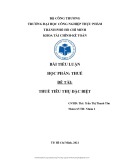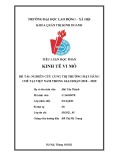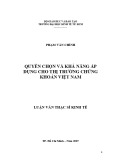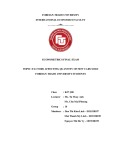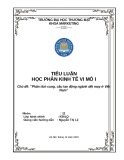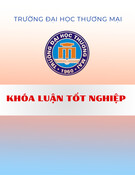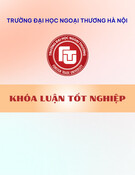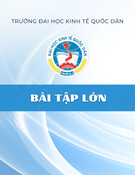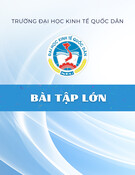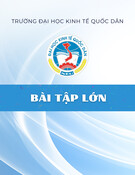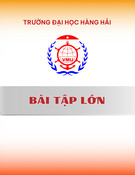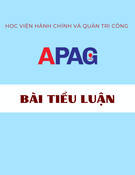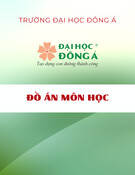
3
CHAPTER 1: INTRODUCTION OF STUDY OVERVIEW
1.1. The necessity of study topic
Along with the activities of microfinance, microcredit contributes to the
practical effect of poverty reduction. It is an important tool in the fight against the
poverty, especially in developing countries (Humle and Mosley, 1996; Shaw, 2004).
In spite of that, this conclusion is still a matter continuing to be discussed and
increasingly attracted many different opinions of researchers, with each study, the
authors have introduced, analyzed different aspects and fields. There are some
options that impact relation of microcredit on income is statistically insignificant
(Sen, 2008; Rukiye, 2012) or other options showed that they did not find the impacts
of microcredit on the income of households (Diadup and Zeller, 2001); the study of
Morduch (1998) found that credit from the Grameen Bank in Bangladesh reduced the
vulnerability rather than poverty reduction and the study of Coleman (1999) showed
that they found only a significant impact of microcredit on the welfare of households
in Thailand.
Up to now, the government in most countries has recognized the active role of
microcredit to poverty reduction, its science research activities on microcredit are
increasingly attracting attention from many experts as well as scholars in the country
and abroad. In order to continue the inheritance, to understand the impact of
microcredit on the income of poor households and especially in the Southeast region,
there is no research conducted yet, but in this study, theoretical framework is formed
on the background of theories, the analysis based on the practical characteristics of
the region to clarify the objectives set out in the study. Before this context, the study
proposes the key issues that need to be explored, that are (1) to check the theoretical
point that microcredit affecting poverty reduction through income factor of the
households is necessary, (2) to improve income for poor households, it is needed to







